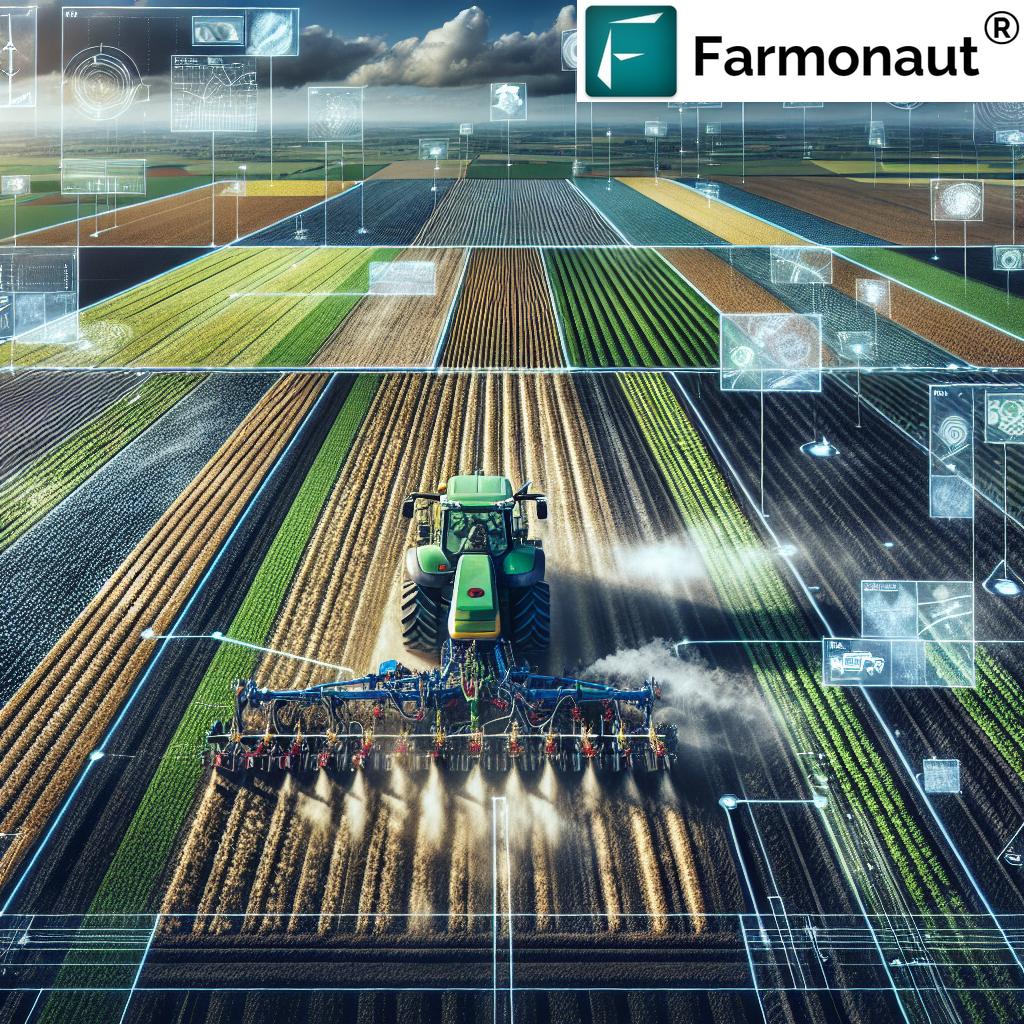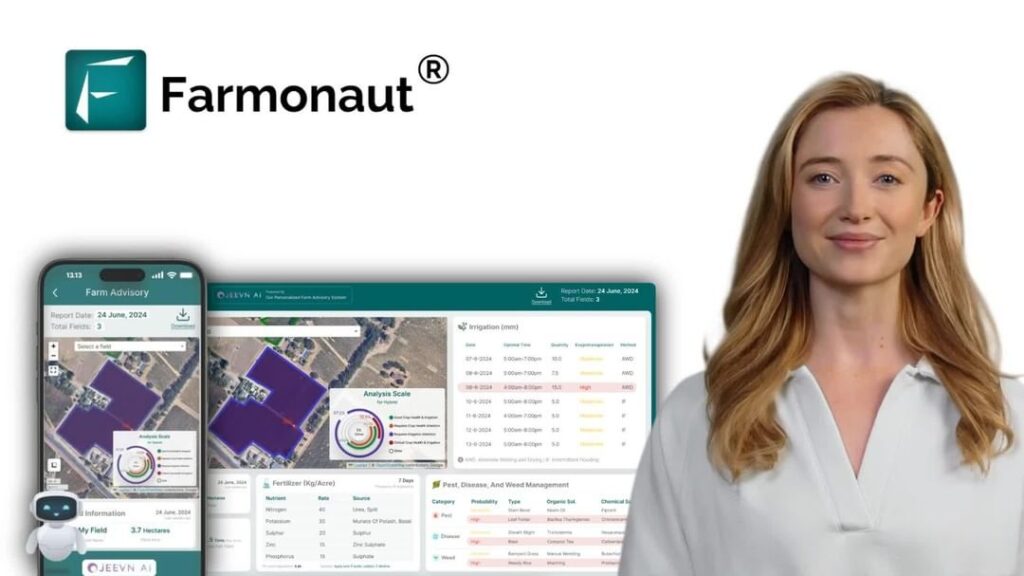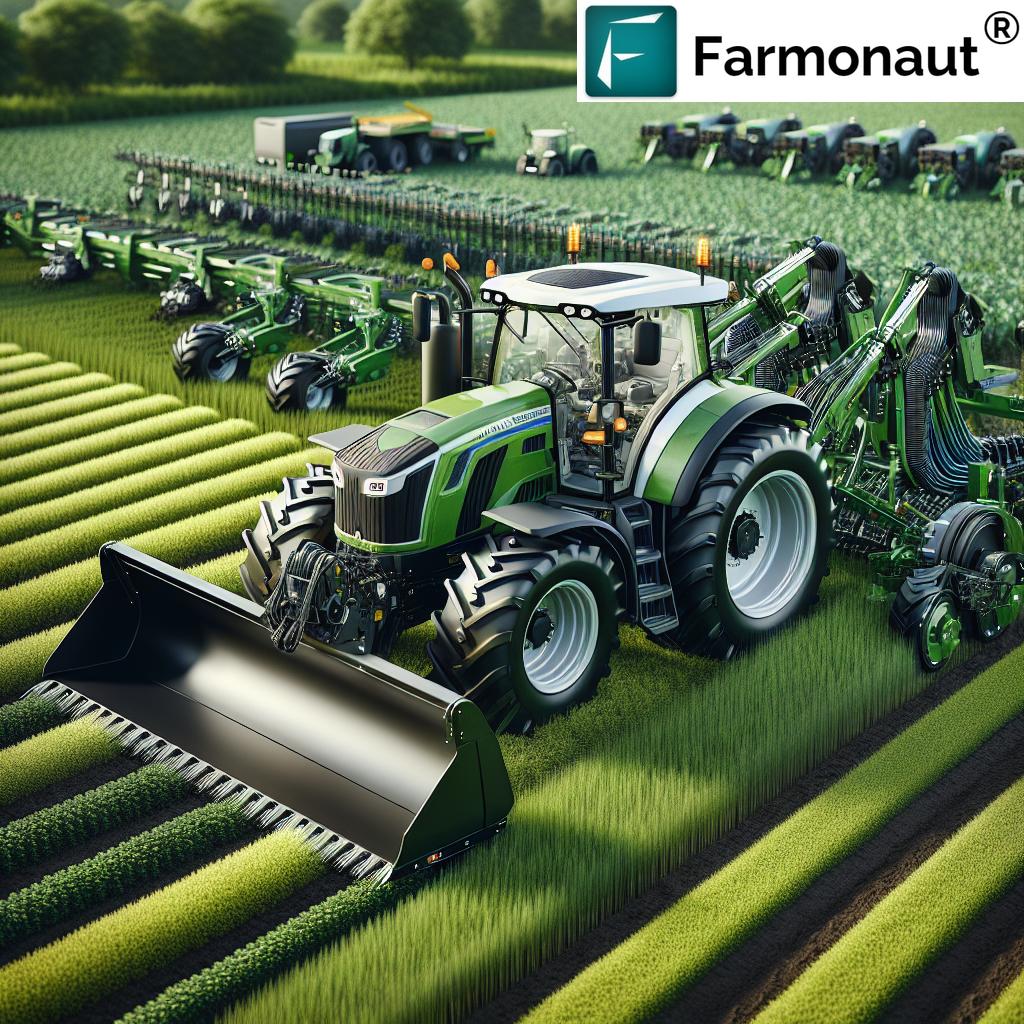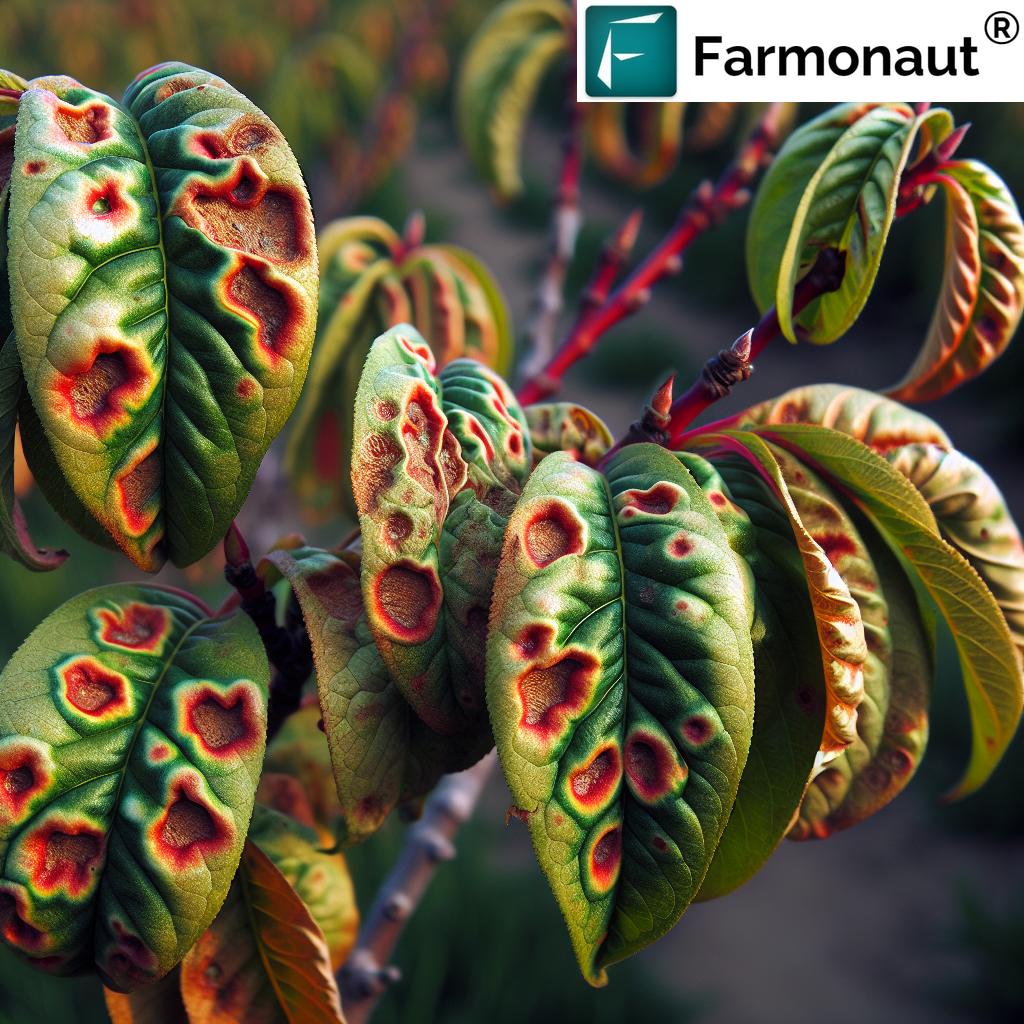Autonomous Farming Technology: Recent Advances 2025
- Introduction: What is Autonomous Farming?
- The Transformative Shift in Agriculture: How Autonomous Technology is Leading the Way in 2025
- Core Technologies Powering Autonomous Farming in 2025
- Recent Advancements in Autonomous Farming Technology
- Autonomous Farming Companies and Innovators
- Autonomous Farming Technology: Solutions and Sustainability Benefits
- Comparison Table of Key Autonomous Farming Technologies (2025)
- Satellites, AI, and Data: How Farmonaut Empowers Precision Agriculture and Sustainability
- Emerging Trends and the Future of Autonomous Farming Beyond 2025
- Frequently Asked Questions (FAQ) on Autonomous Farming 2025
“By 2025, over 45% of new agricultural machinery incorporates autonomous technology for major field operations.”
What is Autonomous Farming?
Autonomous farming technology refers to the deployment of machines and systems across the agricultural sector that can perform essential tasks—such as planting, watering, fertilizing, harvesting, and soil monitoring—with minimal human intervention. Integrating advanced robotics, AI (artificial intelligence), precise sensors, and machine learning, these innovative solutions deliver intelligent operations in the fields, enabling farmers and agricultural businesses to optimize resource use, maximize productivity, and address global food security challenges.
By leveraging the latest advancements in autonomous machinery, the way food is produced globally is undergoing a transformative shift. These technologies promise to not only tackle pressing labor shortages and shrinking arable land but also redefine agriculture through precision, efficiency, and sustainability.
The Transformative Shift in Agriculture: How Autonomous Technology is Leading the Way in 2025
The agricultural sector in 2025 is undergoing a profound shift, propelled by the integration of autonomous farming technology. We are witnessing a significant change in how agricultural machinery and systems perform vital operations, from the initial stages of seed planting to the complex challenge of harvesting and post-harvest management. Let’s explore the factors enabling this sector-wide revolution:
- Rising global food demand: With a growing world population, the demand for reliable, sustainable food production has never been higher.
- Labor shortages and aging rural populations: Shrinking agricultural labor pools are pressing farmers to seek automated alternatives that reduce reliance on manual labor and human intervention.
- Environmental stewardship and regulatory compliance: New regulations and industry standards require sustainable farming, responsible input use, and transparent data on agricultural impact.
- Advances in technology: Unprecedented growth in AI, sensor miniaturization, and precision farming have propelled the sector beyond experimental phases, making autonomous machinery a practical, scalable solution for various farm sizes.
The result is a transformative and promising future for agriculture, driven by innovative autonomous technologies seamlessly integrated into everyday farming operations.
Core Technologies Powering Autonomous Farming in 2025
Effective autonomous farming relies on the integration of several advanced technologies, enabling machines to perform agricultural tasks with unmatched accuracy and efficiency. Understanding these core elements is fundamental to appreciating the way autonomous farming technology is revolutionizing the agriculture sector.
1. Advanced Sensors & GPS Guidance
- Sensors: Sophisticated multi-spectral, infrared, and LiDAR sensors allow machines to detect subtle variations in soil health, crop growth stages, and environmental conditions.
- GPS & GNSS systems: Provide centimeter-level accuracy for trajectory planning and field navigation, forming the backbone of autonomous tractors, combines, and other machinery.
2. Artificial Intelligence, Machine Learning & Computer Vision
- AI algorithms leverage big data, weather forecasts, real-time field inputs, and historical analytics to enable dynamic and informed decisions.
- Machine learning empowers devices to continually adapt, optimizing seeding rates, pesticide application, irrigation patterns, and harvest timing.
- Computer vision enables identification of weeds, pests, and crop health issues, making targeted management possible.
3. Robotics & Autonomous Machinery
- Cutting-edge robots, including autonomous tractors, planters, sprayers, drones, and robotic harvesters, perform repetitive or hazardous tasks efficiently and safely.
- Autonomous driving innovative technology in agricultural machinery reduces the need for manual supervision, enabling 24/7 operations.
4. Connectivity and IoT Integration
- The Internet of Things (IoT) enables continuous data exchange between on-field machinery, remote supervisory stations, and cloud-based AI platforms.
- 5G and beyond connectivity ensure that autonomous equipment communicates in real time, optimizing tasks and fleet efficiency.
5. Cloud Computing and Decision Support Platforms
- Cloud-based platforms aggregate sensor data, analyze it with AI, and return actionable insights to machines and operators.
- These platforms increasingly include blockchain-based traceability to ensure authentic data across the agricultural supply chain.
Ultimately, it is the synergistic integration of these technologies that allows autonomous machines, systems, and platforms to optimize every resource and redefine what is achievable in modern agriculture.
Recent Advancement in Autonomous Farming Technology (2025)
The pace of recent advancements in autonomous farming technology is nothing short of revolutionary. The gap between experimental phases and practical, scalable solutions is now bridged, with 2025 bringing a flood of deployed systems transforming agricultural operations. Some of the most notable advances include:
- Next-generation GPS-guided autonomous tractors and combines: Capable of precise navigation, these machines operate round the clock, optimize route planning, and minimize human intervention, resulting in improved efficiency and reduced operational costs.
- AI-driven decision-making platforms: Platforms now analyze soil health, weather forecasts, crop growth stages, and pest presence, enabling machinery to make informed decisions dynamically.
- Robotic sprayers with computer vision: These systems expertly detect and target weeds, reducing pesticide usage and mitigating environmental risks.
- Autonomous planters and seeders: They adjust seeding density based on real-time soil and field conditions, maximizing yield and minimizing input wastage.
- Drones with multispectral imaging: Autonomous drones now identify crop stress, water needs, and pest outbreaks long before visible symptoms, enabling precision interventions and proactive management.
- Remote supervisory control and predictive maintenance: By integrating telematics and machine learning, agricultural machinery now diagnoses and predicts potential issues automatically, enhancing uptime and reliability for autonomous equipment.
“AI-driven precision agriculture reduces fertilizer usage by up to 30% through targeted application in autonomous farming systems.”
Autonomous Farming Companies and Global Innovators in 2025
Several autonomous farming companies and tech firms have emerged as leaders in deploying agricultural machinery autonomous driving innovative technology across different geographies and crop types in 2025:
- John Deere: Renowned for its Smart Machine Initiatives, John Deere has dramatically expanded its line-up of autonomous tractors and combines, embedding state-of-the-art sensors and AI to power precision agriculture.
- Naïo Technologies: This innovative company develops compact autonomous robots targeted at small and medium farms—offering solutions for mechanical weeding, crop monitoring, and hands-off field management.
- AGCO Corporation: With a focus on integrating machine learning, telematics, and remote supervision into agricultural machinery, AGCO enhances operational uptime and predictive maintenance for large autonomous fleets.
- Other Innovators: Numerous startups and tech giants are leveraging robotics, AI, and IoT solutions to create new models for precision farming, sustainable input use, and automated logistics.
The landscape of autonomous farming companies will continue to expand in 2025 and beyond as more businesses recognize the promise and potential of these transformative technologies.
Autonomous Farming Technology: Solutions, Capabilities & Sustainability Benefits
Rapidly advancing autonomous farming technology brings not only efficiency but also profound sustainability benefits to agriculture:
Key Solutions Provided:
- Precision resource application: AI and robotic planters, sprayers, and irrigators ensure targeted delivery of seed, fertilizer, pesticides, and water, minimizing inputs and losses.
- Labor optimization: By taking over repetitive, hazardous, or physically demanding tasks, autonomous machinery addresses labor shortages faced by farms in both developed and developing regions.
- Continuous operations: Autonomous tractors and combines are capable of working day and night, communicating with each other for optimized fleet management and route planning.
- Enhanced monitoring: Drones and sensor-equipped machines provide real-time, high-frequency data, empowering informed decision-making and timely interventions.
Sustainability Benefits:
- Water savings: Smart irrigation platforms, including AI-powered systems, use sensor feedback to deliver precise amounts of water to crops, reducing waste and supporting sustainable crop plantation and forest advisory.
- Emission reduction and efficient machinery use: Autonomous tractors optimize their operations to reduce idle time and unnecessary movements, cutting fuel usage and overall carbon footprint. Farms aiming for low carbon footprinting benefit from precise machine management and satellite-based tracking.
- Input reduction: Technologies such as computer vision sprayers target only weeds or affected areas, measurably reducing pesticide and fertilizer use, and mitigating environmental and soil impact.
- Scalability and accessible insights: Even smaller farms benefit from the introduction of affordable robotics and satellite-driven platforms for resource optimization—making the leap from experimental technology to mainstream adoption.
- Traceability and transparency: Blockchain integration ensures transparency in agricultural supply chains. Users leverage platforms like Farmonaut’s traceability module to build consumer trust and verify the journey of agricultural produce.
Whether on a small family farm or in large-scale agribusiness, the integration of autonomous technology is redefining the boundaries of what’s possible in modern, sustainable agriculture for 2025 and beyond.
Comparison Table of Key Autonomous Farming Technologies (2025)
For an at-a-glance view of how leading autonomous technologies compare in 2025, refer to the table below. Technologies are assessed for their main function, core AI or automation features, estimated adoption rates, and sustainability impacts:
| Technology/Equipment Name | Main Function | Core AI/Automation Feature | Estimated Adoption Rate in 2025 (%) | Sustainability Benefit |
|---|---|---|---|---|
| Autonomous Tractors | Plowing, Seed Sowing, Tillage | GPS-Guided Navigation; Machine Learning Route Optimization | 32% | Reduced fuel usage; Less soil compaction; Lower emissions |
| Drone Crop Monitoring | Field Health and Pest Monitoring | Multispectral Imaging; Real-Time AI Analysis | 42% | Water savings; Early stress detection; Targeted intervention |
| Robotic Harvesters | Automated Crop Harvesting | Computer Vision Fruit Detection; Autonomous Movement | 18% | Reduced food waste; Labor efficiency; Consistent quality |
| AI-Powered Irrigation Systems | Precision Water Application | Real-time Soil and Crop Monitoring; Automated Valve Controls | 28% | Up to 40% water savings; Prevention of runoff/erosion |
| Self-Driving Sprayers | Targeted Pesticide/Fertilizer Application | Computer Vision Weed/Pest Identification | 16% | 30%+ reduction in chemical inputs; Lower environmental impact |
Satellites, AI, and Data: How Farmonaut Empowers Precision Agriculture and Sustainability
As autonomous farming technology transforms the global agriculture sector, the ability to acquire, analyze, and act on data becomes a cornerstone of next-generation farming. At Farmonaut, we leverage cutting-edge satellite-based monitoring, AI, and blockchain to make autonomous insights accessible and affordable across industries:
- Satellite-based monitoring: Using regular multispectral imagery, we monitor vegetation health (NDVI), soil conditions, and field variability for farms of all sizes. This enables targeted interventions, boosts yield, and supports resource optimization on the large-scale farm management platform.
- JEEVN AI Advisory: Our AI-powered advisory platform delivers real-time, field-specific insights and weather forecasts for crop, plantation, and forest operations. It dynamically responds to changing conditions, empowering farmers and agribusinesses to make informed decisions for optimal results. Learn more about our tailored crop plantation & forest advisory services.
- Blockchain-based traceability: By offering supply chain traceability via blockchain, we enhance food safety and trust, supporting verified origins for crops and produce. Discover traceability solutions for your operation at Farmonaut’s traceability platform.
- Fleet and resource management: Our platform tracks autonomous vehicle usage and equipment logistics, helping businesses reduce fuel, enhance safety, and monitor machinery health for minimized downtime. Streamline logistics and operations using fleet management tools.
- Environmental impact and carbon tracking: Stay ahead of regulatory requirements by measuring emissions and environmental footprints from precision-guided farming machinery. See the carbon footprinting solutions we provide.
- API and Developer Tools: Businesses and developers can rapidly integrate Farmonaut’s satellite and AI-driven insights into custom applications via our API and explore robust integration documentation at Developer Docs.
- Financial institutions: Leverage our data for crop loan and insurance verification, reducing fraud and making agriculture financing safer, faster, and more transparent.
By harnessing advances in satellite technology, AI-driven platforms, and blockchain traceability, we empower individual users, businesses, and government clients in their journey to sustainable, precision agriculture. Our scalable, subscription-driven model ensures that insights are not just powerful but also accessible.
Emerging Trends & the Future of Autonomous Farming Technology Beyond 2025
The evolution of autonomous farming technology will persist beyond 2025, as innovation and adoption accelerate in response to climate change, resource constraints, and evolving consumer preferences. Here are some trends on the horizon:
Advancements Expected:
- Edge AI & On-Device Intelligence: Machinery will increasingly process data locally for quicker responses and independent autonomous decisions.
- Smaller, Collaborative Swarms of Robots: Instead of relying on a few large machines, farms will deploy fleets of small robots that communicate and coordinate autonomously, optimizing every inch of land.
- AI-Generated Simulated Environments: These models will enable farmers to “test” different strategies and planting patterns virtually before implementing them in fields.
- Full-stack Data Integration: End-to-end data aggregation from planting to supermarket shelf, powered by satellite, AI, farm equipment, and blockchain traceability, for true supply chain transparency.
- Pervasive Connectivity: Satellite-based IoT networks will ensure even the remotest farms can connect, analyze, and manage their autonomous equipment seamlessly.
Regulatory frameworks and farmer education will play vital roles in scaling adoption safely and efficiently, while ethical considerations around data and AI-driven decisions will shape standards for responsible and beneficial deployment in global agriculture.
Frequently Asked Questions (FAQ) on Autonomous Farming Technology 2025
-
What is autonomous farming?
Autonomous farming refers to the use of self-operating machines and AI-driven systems to perform agricultural tasks such as planting, watering, fertilizing, harvesting, and soil monitoring with minimal human intervention. -
What are some recent advancements in autonomous farming technology?
Recent advancements include AI-powered autonomous tractors with GPS navigation, drone crop monitoring, robotic harvesters, precision irrigation, and computer vision-based sprayers that target weeds and optimize pesticides use. -
Which companies are leading in autonomous farming machinery in 2025?
Major companies such as John Deere, AGCO, and Naïo Technologies have expanded their autonomous product lines, while startups are innovating with robotics and AI platforms for both large and small farms. -
How does autonomous technology help address labor shortages in agriculture?
Autonomous machinery takes over repetitive, physically demanding, or hazardous field tasks, reducing dependence on seasonal or scarce labor and enabling continuous, efficient farm operations. -
What are the environmental benefits of autonomous farming systems?
Key environmental benefits include optimized use of inputs (fertilizers, pesticides, water), reduced carbon emissions (through efficient machine use), better soil health, and less impact on local ecosystems. -
How can Farmonaut support precision agriculture?
Farmonaut provides satellite-driven monitoring, AI-based advisory, blockchain-based traceability, and fleet/resource management—enabling precise, actionable insights for farms, businesses, and governments. -
Can small farms afford to adopt autonomous farming technology?
Yes. With the scaling of robotics and the availability of affordable platforms like Farmonaut, both smallholder and large-scale farms can implement precision agriculture and benefit from data-driven decisions. -
Where can I access Farmonaut’s satellite and AI solutions?
You can manage all services via the Farmonaut web app, download on Android or iOS, or use the API and refer to developer documentation.
Summary: Autonomous Farming Technology – Revolutionizing Agriculture in 2025
The revolution in autonomous farming technology is delivering practical, scalable, and sustainable solutions to one of humanity’s oldest challenges: reliable, efficient food production amid resource scarcity. By synergistically integrating AI, robotics, advanced sensors, and data platforms, autonomous farming:
- Enhances productivity and resource management
- Reduces labor pressures and repetitive task burdens
- Drives sustainable practices across diverse environments
- Enables precision agriculture for farms of all sizes, globally
- Empowers stakeholders—from farmers to governments and businesses—to make data-informed decisions
With more autonomous farming companies and innovators investing in this transformative technology, agriculture in 2025 is set to become smarter, more sustainable, and better aligned to meet rising global demand. As we continue to refine our solutions at Farmonaut, the promise of autonomous farming extends far beyond productivity—it is a catalyst for a sustainable, resilient, and traceable agricultural ecosystem.
Discover more about how Farmonaut is driving data-driven, sustainable farming. Try the app now →
For businesses and developers, integrate precision agriculture AI into your operations using the Farmonaut API and developer documentation.













